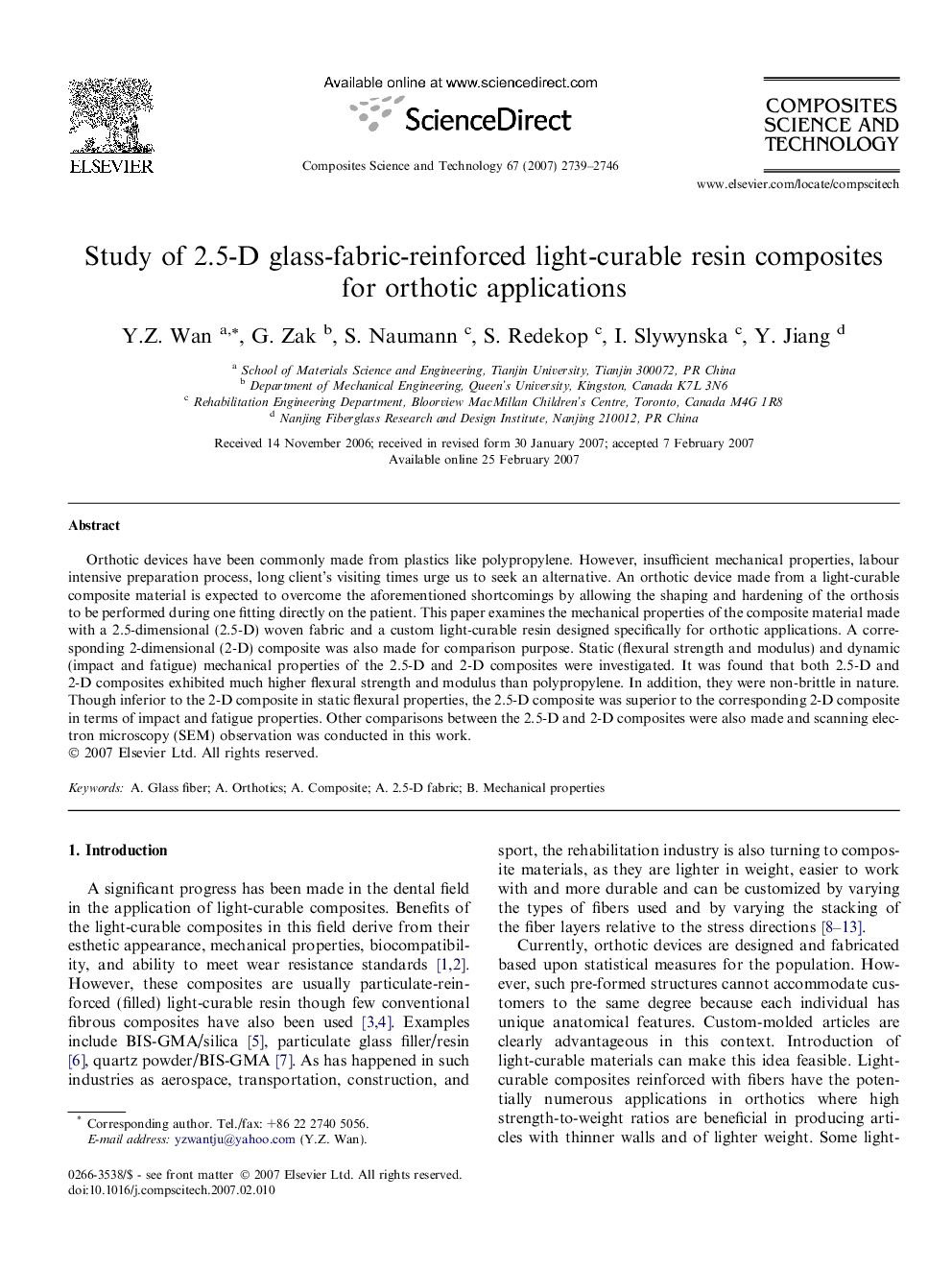| Article ID | Journal | Published Year | Pages | File Type |
|---|---|---|---|---|
| 822603 | Composites Science and Technology | 2007 | 8 Pages |
Orthotic devices have been commonly made from plastics like polypropylene. However, insufficient mechanical properties, labour intensive preparation process, long client’s visiting times urge us to seek an alternative. An orthotic device made from a light-curable composite material is expected to overcome the aforementioned shortcomings by allowing the shaping and hardening of the orthosis to be performed during one fitting directly on the patient. This paper examines the mechanical properties of the composite material made with a 2.5-dimensional (2.5-D) woven fabric and a custom light-curable resin designed specifically for orthotic applications. A corresponding 2-dimensional (2-D) composite was also made for comparison purpose. Static (flexural strength and modulus) and dynamic (impact and fatigue) mechanical properties of the 2.5-D and 2-D composites were investigated. It was found that both 2.5-D and 2-D composites exhibited much higher flexural strength and modulus than polypropylene. In addition, they were non-brittle in nature. Though inferior to the 2-D composite in static flexural properties, the 2.5-D composite was superior to the corresponding 2-D composite in terms of impact and fatigue properties. Other comparisons between the 2.5-D and 2-D composites were also made and scanning electron microscopy (SEM) observation was conducted in this work.
